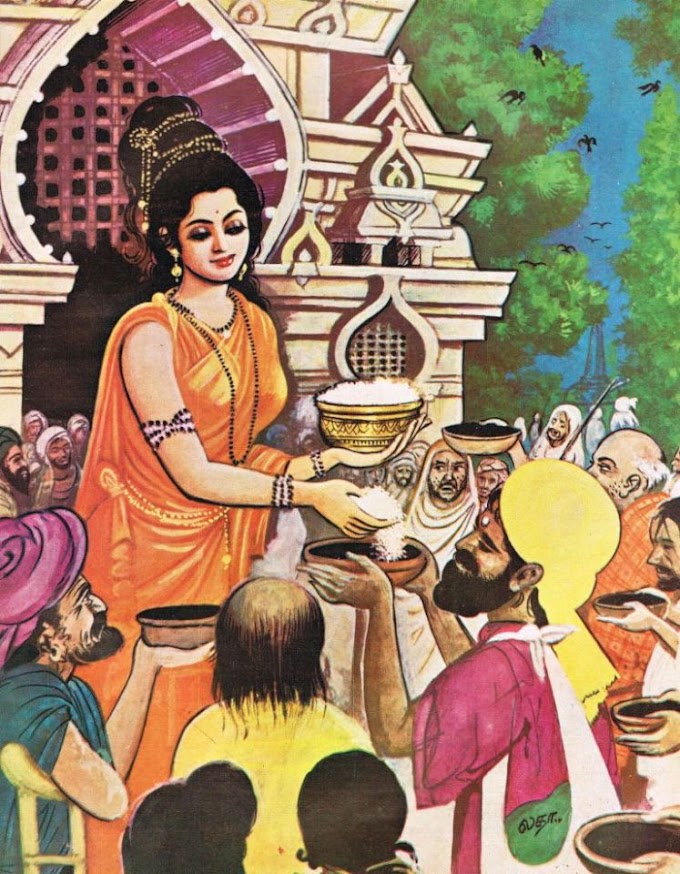In the huge city where drums roar constantly, festivals are celebrated on the wide streets, thunangai dances are performed, beautifully embracing, there are communities with fragrances, and there are many citizens with wealth. In the middle of that fine country praised by poets. -
MathuraiKanchi,1st century CE
Rajan Gurukkal and R.ChampakaLakshmi like scholars are the proponents of theory that emphasizes non-existent of states in Tamilakam during 400 BCE to 6th century CE.
The kings mentioned in Sangam Poems were mere tribal chiefdoms and they weren't Kings.Pattanam is a site excavated in modern Kerala which was then part of Tamilkam. The director of the project is Thiru Cherian. He continued the excavation and proved conclusively it was once flourishing Urban center.
Rajan Gurukkal have argued that Pattanam (which he believes is the location of Muziris) was likely nothing more elaborate than a colony of Mediterranean merchants, plus the inland traders and artisans who dealt with them. Gurukkal’s theory is based on the apparent absence of permanent structures, and the seeming disconnect of the materials and skills found at Pattanam with those of the wider region. He suggests the colony might even have been seasonal, inhabited only when ships arrived for trade.
Cherian has commentedUrban is a complicated word – to me, it means ‘organised’, ‘thought out’, ‘planned’.” And he sees evidence of this in Pattanam: “It was certainly a city, but of its time.”
The excavations have revealed what appear to be toilets, drains and terracotta ring wells, and these – along with raised foundations aligned in one direction – suggest a planned settlement.
Cherian also thinks the level of technological accomplishment – the quality of mortar in a wharf structure; evidence of intricate glass and stone work – and the high density of potsherds (some 4.5 million have been recovered so far) all point to a settlement that was urban in character. The local coins suggest a monetised economy and a degree of political organisation.
The significance of Pattanam is that it is an outstanding example of local settlers, who, with their technology, craftsmanship, architecture and immense natural wealth, made excellent use of both land and sea, contributing to trans-oceanic cultural crossings. Pattanam may aptly be called the ‘Mound of Crossings’.
The features (Permanent elements) excavated as of 2014(9th Season) include foundations of brick architecture, burnt clay floors, a wharf context (structural feature) with a 6 m canoe, ring wells, toilet features, storage jars, and a kiln context. The botanical remains include rice, black pepper, cardamom, frankincense, peat, bark, charcoal, leaves, roots, seeds, wood and pulses. The zoological remains include bone fragments and teeth. The geological remains include a range of local and non-local rocks and stones shows significance of Pattanam.
What we excavated in Pattanam is less than 1% excavatable area.
The site is dated from 10th century BCE to 16th Century. The urban characteristics, nevertheless, appears from 300 BCE -100 BCE.
There are very few sites in Northern India with advance civilization is excavated.
Keezhadi :
Keezhadi is an another very important site in archaeological context. The city is found in 2014 by a ASI team lead by Amarnath Ramakrishnan. They also found around 100 habitational sites around Vaigai River.
Features of Keezhadi:
- It shows brick structures : The Brick structures only found in India from Mauryan Empire from 250 BCE. Keeladi is also dated to 220 BCE. What significance is Keeladi does not show any Buddhist influence and it establishes that no Muaryan influence was involved in this Urbanisation process.
- It shows complex Drainage system: The Drainage system is found in Ujjain dated to 5th Century BCE and also found in Nashik, Delhi, Taxila dated to 200 BCE.
Keezhadi shows much more complex system than those.
- It shows Rings wells : The discovery of ring wells is the most important among them. Ring wells had been used extensively at the IVC. The presence of ring wells signifies two things. One, it is an indication of an urban civilization. And two, the presence of industry. The discovery of ring wells strengthened the archaeologists conviction that Keezhadi was an urban settlement
- Tools used for weaving and ship/boat building, expensive pottery work from different parts of the world, beads from semi-precious stones that are found elsewhere in the subcontinent were also discovered. Exquisite terracotta figurines were also discovered at the site. All of these discoveries firmly establish that Keezhadi was a trade center during the sangam era. More importantly, it stands as evidence for the craftsmanship of the civilization.
K. Rajan, the director of the project showed that the site belongs to 408 BCE through C14 datings obtained from an US lab.Kodumanal :
The Brahmi inscription obtained from sherds is more than 600 written in Tamil and Prakrit (mainy personal names).
It was an Industrial site going back to Sangam period and has produced famous Wootz steel. The steel was then imported to foreign lands from ports like Pattanam and PoomPuhar.
The Romans had knowledge of wootz steel and they called Cheras of Tamilakam as Seres.
K Rajan says this a Habitation-cum-burial site and is dated to 4th century BCE. The second Phase of Urbanisation is started from 5th Century BC in Gangetic Plain ,and Central India(Ujjain) ,and Kodumanal is more or less belongs to same time period.
Kodumanal, however, reveals some advance metallurgy works prevailed in Tamilkam during Sangam Period. Around 600 or more Brahmi sherds are found that very much advocates wide prevalence of literacy among inhabitants.
Prof Srinivasan has been studying wootz steel for quite a while. She has published several research papers on the subject, highlighting the importance of metallurgy
This could only be achieved by skilled personnel with a deep understanding of the metallurgy of those times says Professor Srinivasan.
Reference:
R.ChampakaLakshmi: Trade, Ideology, and Urbanization: South India 300 BC to AD 1300.
Lost cities #3 – Muziris: did black pepper cause the demise of India's ancient port?
Unearthing Pattanam by PJ Cherian.
Ilavaluthy Mahendran (இளவழுதி)'s answer to What is the significance of recent excavation at Keezhadi, Sivaganga, Tamilnadu?
R.ChampakaLakshmi: Trade, Ideology, and Urbanization: South India 300 BC to AD 1300.
Lost cities #3 – Muziris: did black pepper cause the demise of India's ancient port?
Unearthing Pattanam by PJ Cherian.
Ilavaluthy Mahendran (இளவழுதி)'s answer to What is the significance of recent excavation at Keezhadi, Sivaganga, Tamilnadu?
Ultrahigh-carbon “wootz” from crucible carburization of molten iron: Hypereutectoid steel from “Tamil Nadu Process” at Mel-siruvalur
TECHNOLOGY OF IRON AND STEEL IN KODUMANAL- AN ANCIENT INDUSTRIAL TOWN IN TAMIL NADU
TECHNOLOGY OF IRON AND STEEL IN KODUMANAL- AN ANCIENT INDUSTRIAL TOWN IN TAMIL NADU
K. Rajan, Situating the Beginning of Early Historic Times in Tamil Nadu: Some Issues and Reflections
It will be updated once we find more such sites in Tamilakam.





0 Comments